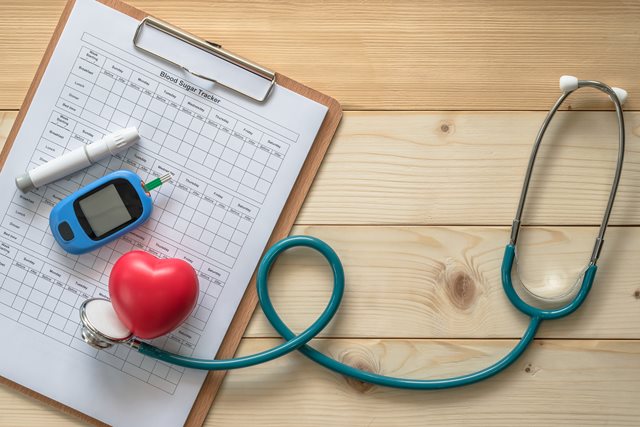If you live with diabetes, you can still get a driver’s licence—as long as you are considered “medically fit to drive.” For those with type 1 diabetes, the increased risk of low blood sugar (hypoglycemia) is the biggest challenge to getting a licence, as it can affect a person’s ability to safely operate a vehicle.
Diabetes Dialogue spoke with Dr. Anne Kenshole, professor emerita of medicine at the University of Toronto, and Sergeant Murray Campbell, supervisor of traffic services for the Toronto Police Service. Part of the medical advisory board for the Ministry of Transportation in Ontario, Kenshole reviews medical cases in which a person has had a major hypoglycemic episode, to determine if it was a one-off or if the driver has a history of episodes. Campbell, who lives with type 1 diabetes himself, investigates serious traffic accidents.
What are the medical risks that affect a person’s ability to drive if they have type 1 diabetes? What about type 2?
Kenshole Some drivers may experience “hypoglycemia unawareness,” where they are unable to tell when they are becoming hypoglycemic. This is usually only a problem for a small number of drivers, typically those who have lived with type 1 for many years who no longer get the warning symptoms of hypoglycemia. The good news is that by totally avoiding all hypoglycemia for a few months, they can usually begin to detect low blood sugars again.
The main hazards for people with type 2 are associated with complications, including neuropathy, amputation, heart disease, and eye problems, all of which can affect driving.
What happens when a person experiencing hypoglycemia gets behind the wheel?
Campbell Many of the calls we get are from people reporting suspected impaired drivers. In some instances, it is found out later that they’re in fact not impaired by drugs or alcohol, but they are hypoglycemic. These drivers exhibit the same symptoms, and show exactly the same effects: combative and argumentative [behaviour], slurred speech, glassy eyed. Hypoglycemic drivers can be involved in collisions—some of them serious. Some of them fatal.
What can people with diabetes do to prevent trouble while driving?
Kenshole People who use insulin to manage their diabetes should check their blood sugar before getting into the driver’s seat and at least every four hours while driving. That’s not necessary for people who manage their diabetes through diet or are using the newer diabetes pills that do not cause hypoglycemia. People with a history of hypoglycemia unawareness are required to test before driving and then every two hours [while driving]. Keep a blood glucose meter and a [fast-acting] sugar to treat hypoglycemia within easy reach in your vehicle. When you pull over to check your blood sugar, take the keys out of the ignition. [If you are having a low,] the law requires that you do not turn the engine on again for 45 minutes. Although this may seem bizarre, studies have shown that hypoglycemia affects the brain’s function, and it can take this long for the brain to get back to normal.
Campbell When I get into the car, I [check] my blood sugar before I drive, every single time. When you’re driving for long periods, make it a habit to [check] your blood sugar frequently. Set a reminder on your phone or watch.
Keep a fast-acting carb in your car. I have a bottle of [dextrose] tablets in mine, plus I usually have one in my pocket, and one in my bag that I carry back and forth to work.
The worst time to find out you don’t have anything with you to treat [a low] is when you’re in your car, confused and away from home.
What should people with diabetes do if they feel unwell while driving?
Kenshole Just like you would stop and check the car if the steering did not feel right, you should also do so if your body does not feel right. If someone else in the car asks if you are okay, you are probably not. If you feel drowsy or if other drivers are honking at you, something is not right. Always pull over and check your blood sugar in these situations.
How does responsibility come into play with the topic of diabetes and driving?
Campbell The ability to drive is not a right, it’s a privilege, and the responsibility, both civilly and criminally, is that of the person behind the wheel. There is no justification for driving while the physical and mental effects of diabetes are affecting any part of a person’s ability. This is just another piece of our lives that we need to give an extra effort to, in order to survive.
Did you know?
All people with diabetes have the right to apply for a driver’s licence. For practical information about driving with diabetes, see Diabetes Canada’s guide to driving safely with diabetes. For more from Kenshole and Campbell, watch the webinar Stay Safe While Driving with Type 1 Diabetes.
How can you help us fund research, projects, and campaigns that change lives? Donate now!
(This article appeared in Diabetes Dialogue, Winter 2020)
Related Content

Become an advocate
Got an issue? Let's work together to solve it. Become a Diabetes Canada advocate today.
Learn more About Become an advocate
Help us End Diabetes
Your support can help us fund research, projects and campaigns that change lives.
Donate now About Help us End Diabetes
Tools & resources
Take charge of your health with tools and resources from Diabetes Canada.
Get started About Tools & resources